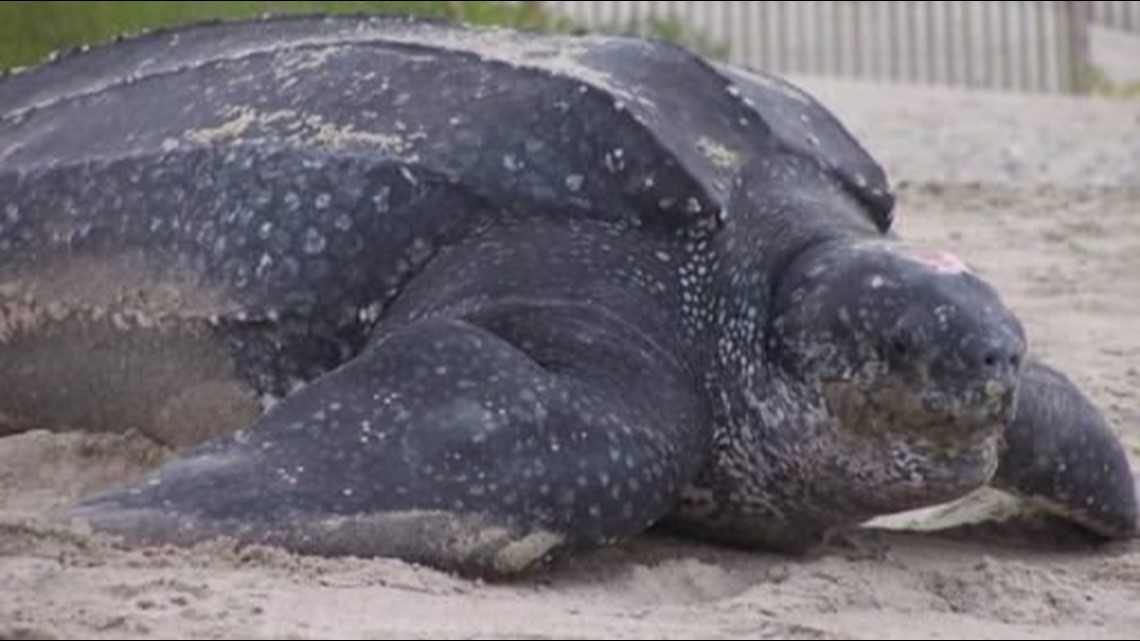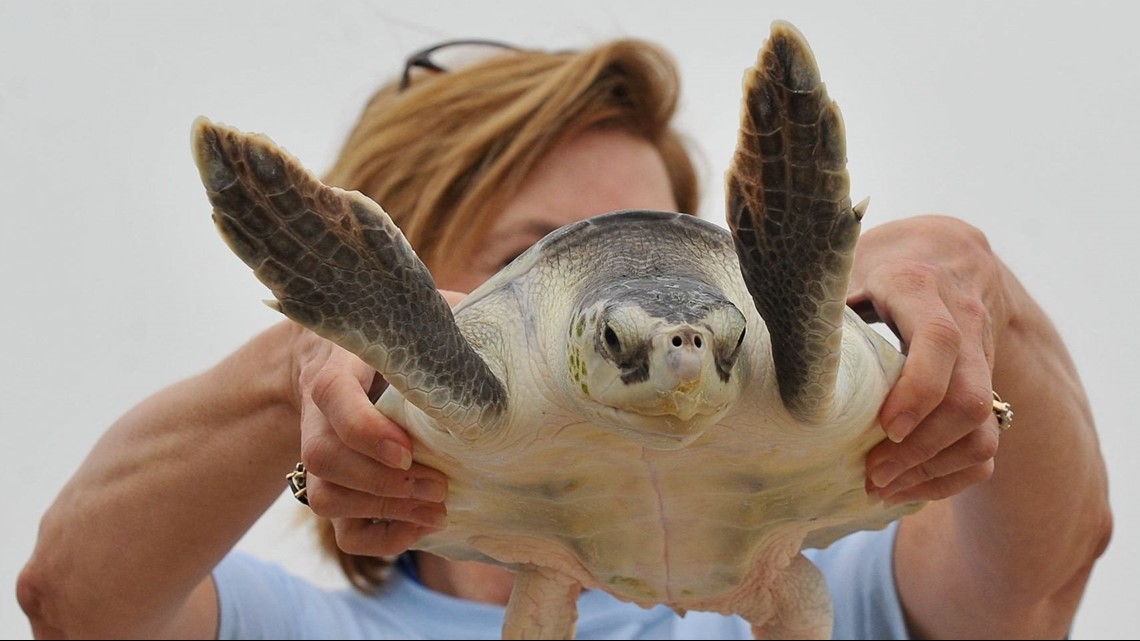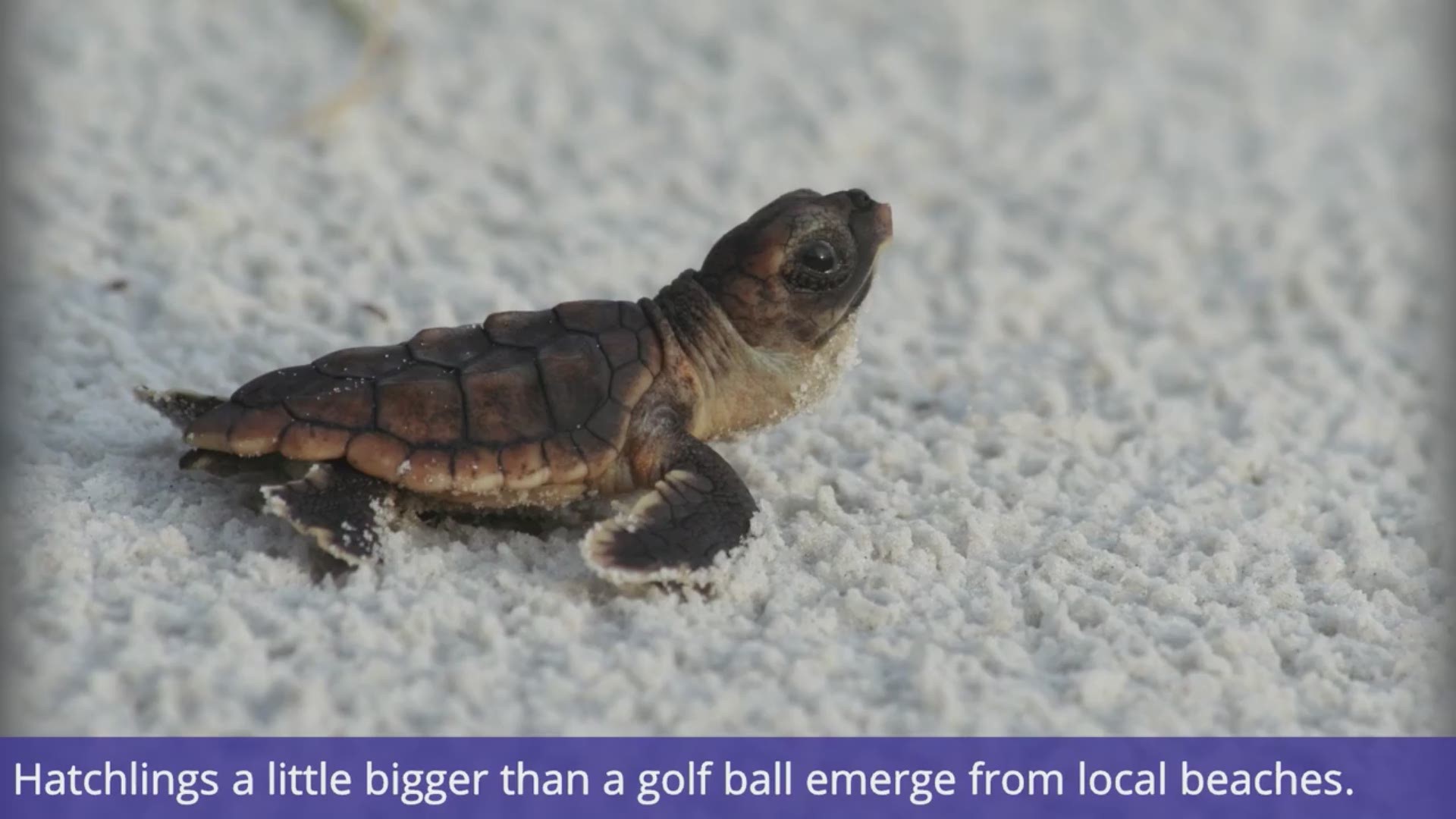EASTERN SHORE, Va. (Delmarva Now) -- Although a lot of fishermen have become accustomed to seeing turtles offshore, many don't really know much about them, and there’s a lot of interesting stuff to know about sea turtles.
For one thing, the different species include the loggerhead, leatherback, green, hawksbill and Kemp’s ridley turtles. Of these species, the loggerhead is the most commonly seen in the waters off the Eastern Shore.
A loggerhead’s shells and flippers are typically a yellow-brown in color and often partially covered with barnacles and seaweed. An adult loggerhead’s average shell length is about three feet, but it may grow to as much as four.
Loggerheads will feed on a variety of marine organisms but dine mostly on crustaceans and mollusks.
It’s not uncommon for boats to pass close by loggerheads resting on the surface before they raise their heads, take a quick look at the vessel, and with a few quick pulls of their front flippers dive for the safety of the depths.
Unfortunately, too often a turtle’s reaction time is not what it needs to be and a skipper accidentally runs over a turtle that wasn’t noticed ahead of the boat. A boat strike can not only be lethal to the turtle, it may also cause serious damage to a vessel. Loggerhead turtles are listed as a “threatened” species.
Probably the second most commonly seen turtle off our coast is the leatherback. With shells that might reach a length of six feet and overall weight that can hit a ton, leatherbacks are actually the largest turtle species on the planet.
Imagine that, right in our own backyard! Leatherbacks are really the easiest of the turtles to identify because unlike other species they don’t have the big scale-like “scutes” on their shell or flippers.


Also, they’re the only black marine turtle in the Atlantic. Instead of scutes, leatherbacks are covered by a leathery skin with seven prominent ridges that run from front to back across their carapace (shell).
Leatherbacks are typically shyer than loggerheads and so boaters seldom get to observe them at close quarters. This is actually a good thing because thanks in part to boat strikes, entanglement in commercial fishing gear, and debris ingestion, this species of turtle has been listed as “endangered.”
Swimmers should appreciate the fact that the leatherback’s primary diet is jellyfish.
Like loggerheads, green sea turtles have the traditional turtle-like shell but without so much barnacle growth. Their carapace and head are usually an olive to brown color with wavy, starburst like patterns on the scutes.
Green sea turtles are the largest of the “hard-shelled” sea turtles, and have a diverse diet, which includes mollusks, jellyfish, crustaceans, seagrasses and microalgae.
The breeding population of these turtles in Florida is endangered due to a loss of nesting and feeding habitats. Other issues threatening the species include fishing gear, disease, and of course, boat strikes.
Hawksbill sea turtles have a carapace that might grow to a maximum length of about 3-feet and can be identified by the large, thick, horny, and overlapping scutes that cover it. They feed primarily on sponges and bottom-dwelling invertebrates.
The beauty of these turtles has been their undoing as they have been exploited around the world for their shells. The hawksbill's plight is compounded by the loss of nesting beaches and coral reefs in the U.S. and Caribbean.


Finally, while the Kemp’s ridley is one the smallest sea turtles that might be observed off Delmarva, I wouldn’t suggest anyone hold their breath until they see one because they are also one of the most endangered thanks to so many of them being scooped-up by commercial fish and shrimp trawlers.
Egg collection and the taking of nesting females (mostly in Mexico) have also wreaked havoc among this species. Kemp’s ridley sea turtles feed primarily on crabs, but at times mollusks and shrimp can also become an important part of their diet.
Unless it’s one of the unique leatherbacks, the quick glimpse offered by most turtles before they scoot down to the depths can certainly make it challenging for the average boater to identify.
But that’s ok, as long as everyone keeps a sharp-eye open and “see” the “sea” turtle before running over the unfortunate critter.
Between fishing gear, loss of habitat, nest robbing, and wondering where their next plate of jellyfish is going to come from, these ocean-going reptiles have enough to worry about.
► Make it easy to keep up to date with more stories like this. Download the 13News Now App.

